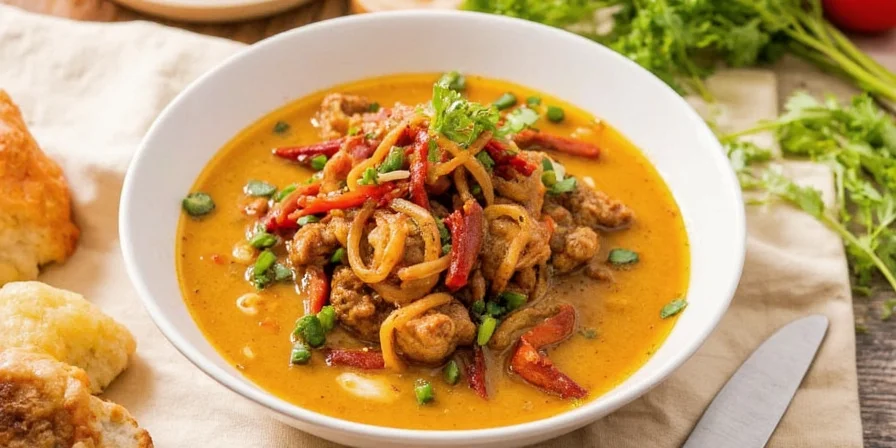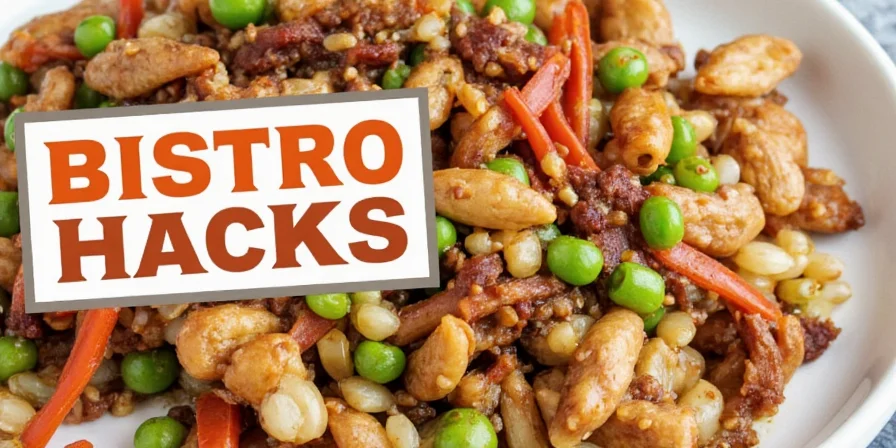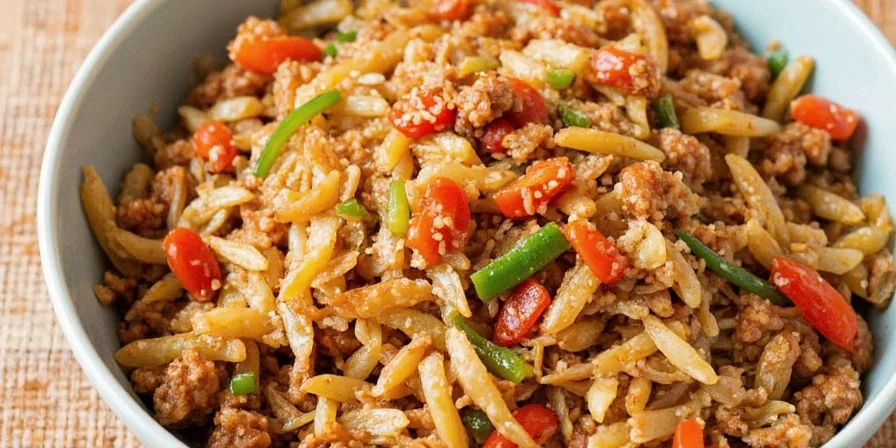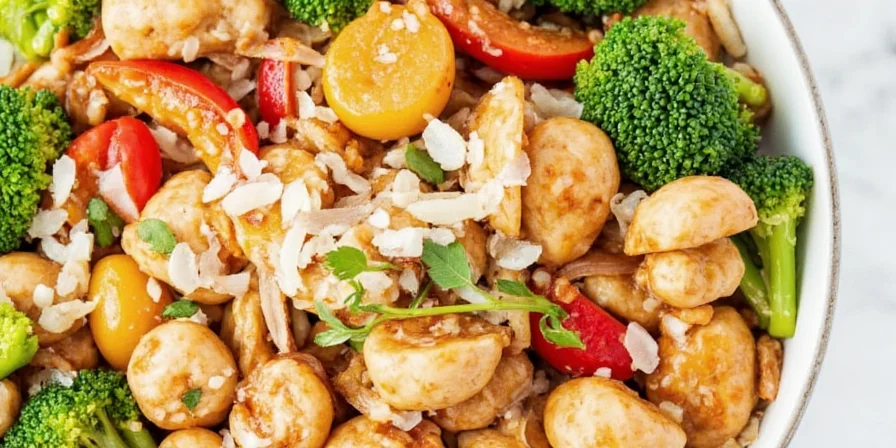7 Spice Bistro Hacks: Asian Flavors That’ll Blow Your Mind (Without Breaking the Bank!)
Welcome to your new go-to guide for mastering the art of Asian spice bistro magic in your own kitchen. Whether you’re a professional chef with decades of experience or a curious home cook who just discovered sriracha, this list will ignite your taste buds and give you practical tips to bring that authentic bistro flair into your meals.
We’ve all been there — staring at a crowded spice rack wondering why your homemade pho still tastes like lukewarm disappointment. Fear not! With a few clever tricks and insider knowledge from Global Spice Traditions, you’ll be crafting dishes that make your guests swear they’re dining in Bangkok, Tokyo, or Mumbai without ever leaving your kitchen.
Table of Contents
- Hack #1: Understand the ‘Spice Language’ of Asia
- Hack #2: The Secret Behind Umami: Toasting and Blooming Spices
- Hack #3: Build Your Asian Spice Bistro Pantry on a Budget
- Hack #4: Regional Spice Blends — From Garam Masala to Shichimi Togarashi
- Hack #5: Pairing Heat and Aroma Like a Pro
- Hack #6: Use Freshness to Boost Flavor Without Extra Ingredients
- Hack #7: Create Fusion Dishes Using Traditional Spice Foundations
- Conclusion





Hack #1: Understand the ‘Spice Language’ of Asia
Asia isn’t one place — it’s a vast continent with dozens of unique spice cultures. Think of each region as speaking its own flavor dialect:
- India: Complex layering of sweet, earthy, and hot spices like cardamom, cloves, and mustard seeds.
- Thailand: Balanced heat from chili peppers paired with lemongrass, galangal, and kaffir lime leaves.
- China: Emphasis on aroma via star anise, Sichuan pepper, and five-spice powder.
- Japan: Subtle yet impactful blends like shichimi togarashi and yuzu kosho.
- Indonesia/Malaysia: Warm, smoky profiles using nutmeg, cinnamon, and candlenuts.
Knowing which spices define which cuisine helps you build authenticity in every bite.
Hack #2: The Secret Behind Umami: Toasting and Blooming Spices
You might throw spices straight into your dish, but true flavor alchemy happens when you toast or bloom them first. This step is like giving your spices a wake-up call before the main event.
| Method | Best For | How To Do It |
|---|---|---|
| Toasting Dry Spices | Cumin, coriander, fennel seeds | In a dry pan over medium heat, toss until fragrant (~1-2 mins). |
| Blooming in Oil | Turmeric, mustard seeds, dried chilies | Add to oil early in cooking to release essential oils. |
| Infusing in Liquid | Star anise, cinnamon, cloves | Add to broths or sauces early to infuse depth. |
Hack #3: Build Your Asian Spice Bistro Pantry on a Budget
You don’t need to buy out a spice shop to create incredible Asian flavors. Focus on quality over quantity, and always store spices properly to preserve potency.
Budget-Friendly Must-Haves:
- Garam masala (or make your own)
- Fish sauce or soy sauce
- Black and Sichuan peppercorns
- Red chili flakes
- Star anise & cinnamon sticks
- Lemongrass paste (or frozen stalks)
- Turmeric powder or fresh root
Pro Tip: Buy whole spices whenever possible — they last longer and retain flavor better than pre-ground versions.
Hack #4: Regional Spice Blends — From Garam Masala to Shichimi Togarashi
Mastering regional spice blends can instantly elevate your dishes from “home-cooked” to “bistro-level.” Here’s a quick comparison:
| Blend | Origin | Main Ingredients | Common Uses |
|---|---|---|---|
| Garam Masala | India | Cardamom, cumin, coriander, cloves, black pepper | Dal, curries, meat marinades |
| Shichimi Togarashi | Japan | Chili pepper, orange peel, sesame seeds, sansho pepper | Ramen, grilled meats, udon |
| Kroeung | Cambodia | Lemongrass, galangal, turmeric, garlic | Cambodian curry, fish amok |
| Sambal Oelek | Indonesia | Ground red chili, vinegar, salt | Stir-fries, dipping sauces, satay |
| Panch Phoron | India/Bangladesh | Fenugreek, nigella, cumin, fennel, mustard seeds | Veggie stir-fries, pickles, lentils |
Hack #5: Pairing Heat and Aroma Like a Pro
Spicy doesn’t always mean good. True spice masters know how to balance heat with aromatic warmth. Try these combos:
- Sichuan Pepper + Star Anise: Tingling mouthfeel meets deep sweetness — perfect in hot pot.
- Garlic + Thai Chili: Bold, bright, and punchy — ideal for pad kra pao.
- Turmeric + Cumin: Earthy and grounding — great for soups and stews.
- Lemongrass + Galangal: Bright citrus meets sharp spice — excellent in curries and broths.
Hack #6: Use Freshness to Boost Flavor Without Extra Ingredients
Did you know old spices are like expired milk? They don’t kill your dish, but they sure won’t help it shine either.
Here’s how to keep your spices vibrant:
- Store in airtight containers away from light and heat.
- Label and date every spice you buy.
- Replace ground spices every 6 months; whole spices every year.
- Keep only what you use — less clutter means more clarity!
Hack #7: Create Fusion Dishes Using Traditional Spice Foundations
Want to impress your friends? Try blending traditional spice techniques with modern comfort food. Fusion cooking is all about respect for the source culture while having fun with creativity.
Try These Combos:
- Thai Curry Quesadillas: Red curry paste, coconut milk, chicken, mozzarella cheese.
- Indian-Spiced Meatballs: Garam masala, cumin, ginger, served over couscous or pasta.
- Japanese Teriyaki Tacos: Soy sauce, mirin, sake, mixed with ground pork and chili oil.
- Malaysian Butter Chicken Pasta: Kadhi masala, crushed tomatoes, heavy cream, penne noodles.
Conclusion
There you have it — seven powerful hacks to turn your kitchen into an Asian spice bistro powerhouse. Whether you're experimenting with fusion flavors or sticking to traditional recipes, the key lies in understanding how spices work together and treating them with the respect they deserve.
Remember, spice is personal. Don’t be afraid to tweak, taste, and play with ratios. The best part of working with Global Spice Traditions is that every flavor has a story — and now you get to write yours.
So grab your mortar and pestle, heat up that wok, and let those aromatics sing. You’re not just making dinner — you’re creating an experience.











 浙公网安备
33010002000092号
浙公网安备
33010002000092号 浙B2-20120091-4
浙B2-20120091-4